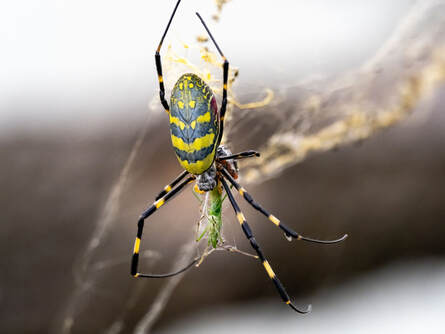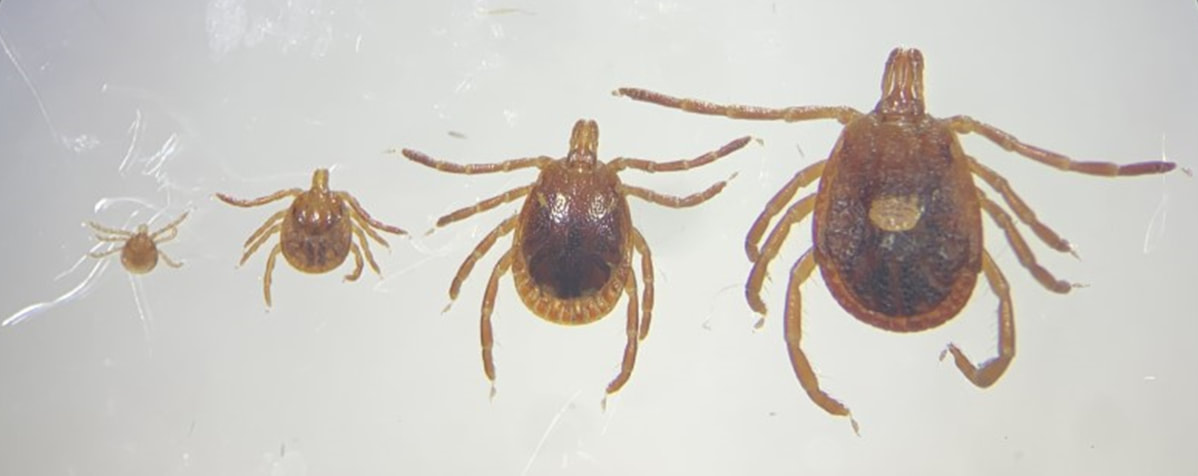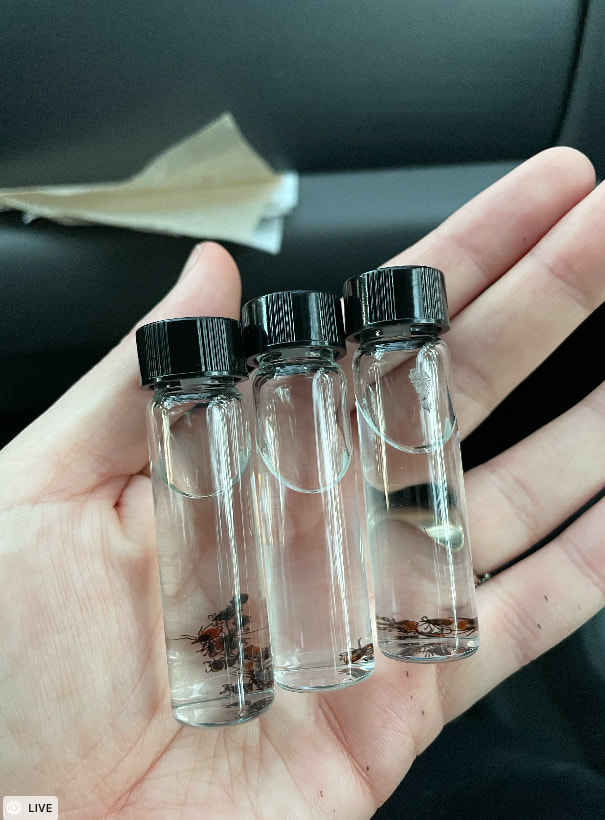|
You may have noticed media reports on this very large spider. Are you getting more questions from customers afraid of spiders falling from the sky? Have you thought, “should I be worried about this”? Experts agree that people should not fear this gentle giant. A little bit of knowledge can help calm down worries and equip you to answer questions you may get about the joro spider. For many of us across the U.S., spring has arrived with some much needed sunshine and warm weather. Unfortunately, rising temperatures have also triggered the emergence of some undesirable 6 and 8 legged creatures. Along the east coast, this includes the presence of a new, menacing looking spider. But do not be afraid, looks can be deceiving. Coined the ‘joro spider’ (Trichonephila clavata), this palm-sized arachnid (another term scientists use for spider) invaded from Japan and took up residence in Georgia back in 2014. Recently, a scientific publication claimed that this species had the potential to invade the entire east coast due to its cold hardiness versus other related, native species. The popular press really ran with the finding, crafting sensationalized headlines to warn the public that large spiders would soon be literally “falling from the sky”—pushing the joro spider into the limelight, most likely, undeservedly. Joro spiders are native to Japan and eastern Asia, and experts think they entered the U.S. in shipping containers. Using websites such as https://www.inaturalist.org/, which allows citizens to report sightings of joro spiders, scientists estimate the current range of this invasive species to be somewhere around 15,500 square miles.
In spite of a striking appearance (in Japanese folklore, the joro spider turns into a striking woman to prey on unsuspecting men), they do not harm humans or animals and are considered a very passive spider. Although you probably should not handle one, bites are unlikely. Additionally, experts have found that this species has little to no effect on regional agricultural practices or ecosystem functions. They might even be beneficial, as they feed on some pest insects, and might serve as an additional food source for birds and other predators. Thus, unlike other more destructive invasive insects, spiders, and ticks you may have heard of (e.g., spotted lanternflies, fire ants, brown marmorated stink bugs, and Asian longhorned ticks) researchers think the best thing to do with this spider is simply leave it alone. Right now, there have been joro spider sightings in Georgia, Tennessee, South Carolina, North Carolina, and Oklahoma. They can easily move due to human activity and travel. Time will tell how far they will establish, but over the next decade or so, researchers estimate that the spider’s range will increase in all directions due to their ability to withstand milder climates. There is no reason to kill these spiders when you see them. Although if you see one outside reported ranges, you could report it to help scientists map their spread throughout the U.S. Additionally if you need assistance with identification, you can work with an extension specialist at a major academic university in your state. You may be tempted to kill spiders when you see them, especially non-native, giant ones that look threatening. However, try not to judge a book by its cover here. This may be a lucky situation where an invasive species actually benefits the area it inhabits. Let’s hope so because, like it or not, it looks like joro spiders are here to stay. For more information on joro spiders, check out this nice article by The Washington Post.
0 Comments
How does a tick bite make you allergic to red meat? Can you prevent this from happening? One entomologist wants to prepare you with information to protect yourself and the ones you love from ticks.
One of the most important—and unique—aspects of this disease is that the allergy has been linked to the bite of certain hard ticks species. (Ticks are often grouped as hard or soft based on their body type- and no, it has nothing to do with how much time they spend at the gym.) A large majority of patients diagnosed with AGS have a history of tick bites, or these people have elevated antibodies in their bloodstream associated with the alpha-gal sugar following tick bites. Two tick species have been strongly implicated in causing this allergy in the US—both commonly found biting humans. The picture above depicts the most common tick associated with AGS (and one of the most aggressive human-biting ticks in the southeastern US!): the Lone Star tick, Amblyomma americanum. Currently, scientists believe that the ticks’ saliva contains alpha-gal antigens, which are little molecules that cause our bodies to have a reaction. Thus, after a human is bitten by the tick and develops the reaction, their immune system is ready to combat a future attack. Unfortunately, if this person eats red meat at a later time—which contains alpha-gal—their body might mistake the alpha-gal from the meat with the alpha-gal from the tick bite. The mistaken identity might lead to an allergic reaction, which likely increases in severity the more times this person eats red meat. Additionally, alpha-gal sugar is not only present in red meat but also in certain products or foods made from mammals (examples: some dairy products or gelatin), meaning these products might also trigger the allergy. While the medical community is understanding how to handle this new allergy in patients, medical entomologists are stressing how important preventing the allergy is in the first place. One of the best prevention methods is preventing tick bites all together and being vigilant about tick bites when exposed. For those people who enjoy being in the great outdoors (of course where all the ticks are), utilizing EPA registered on-skin repellents containing DEET are a great defense. Additionally, clothing containing permethrin can also keep ticks off of you. If tick habitat is completely unavoidable (for those who backpack, hunt, or even have animals that may bring in ticks), completing a “tick check” as soon as you are able to after leaving the environment is recommended. By checking all of your clothing, shoes, gear, etc. for ticks carefully, you lessen the likelihood of bringing any into your home. Once you are inside, check your entire body for ticks, especially in places where your clothing was tighter on your body (think: back of your knees, between the legs, ankles, armpits, around your waist, etc.). Lastly, if you do find a tick on your body biting you, remove it as soon as possible. The Centers for Disease Control and Prevention has an excellent removal infographic. Although not the first human allergy associated with arthropods (think: honeybees, ants, or wasps), AGS is one of the only ones that is (1) caused by the bite (instead of a sting) of an arthropod resulting in (2) an allergy to a food we eat. Because AGS is relatively new to the medical community, there is still a lot we do not know about how the allergy works.
|
Bug Lessons BlogWelcome science communicators and bug nerds!
Interested in being a guest blogger?
Archives
November 2023
Categories
All
|




